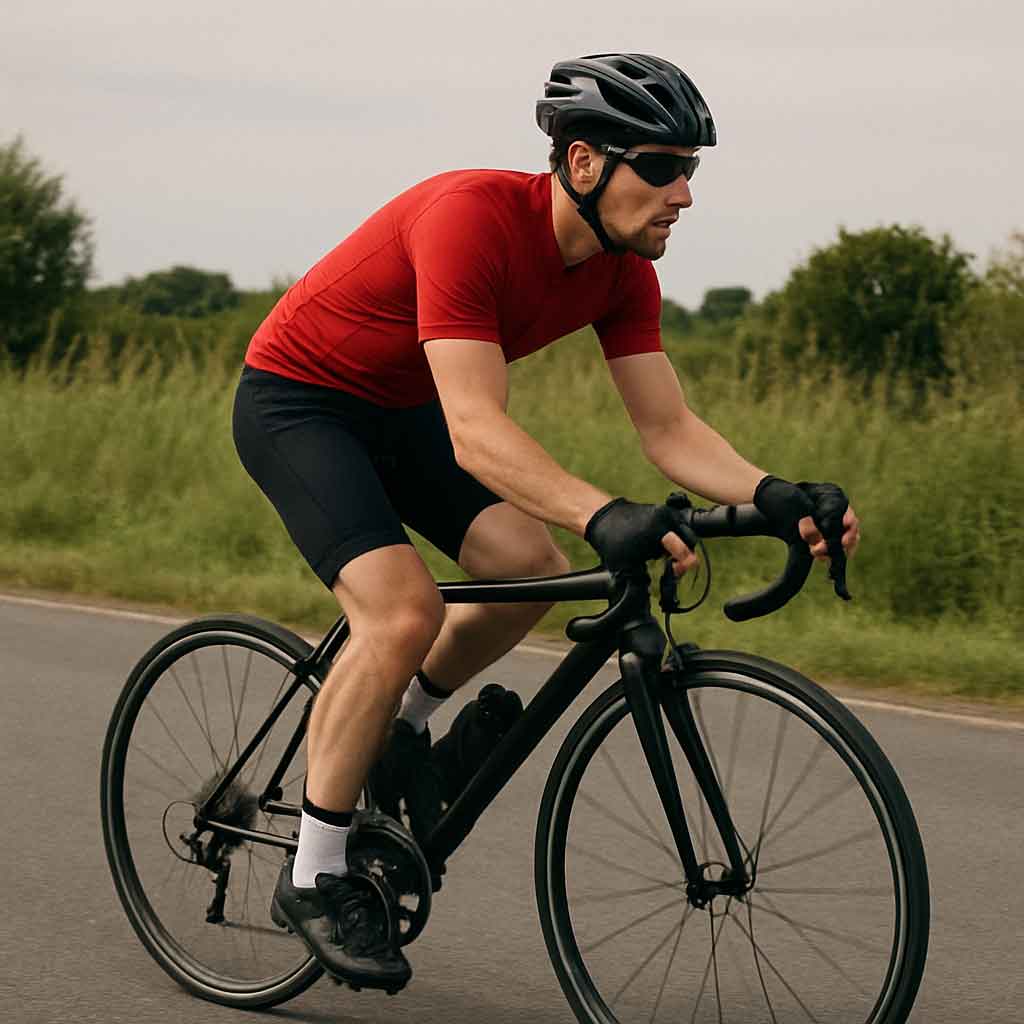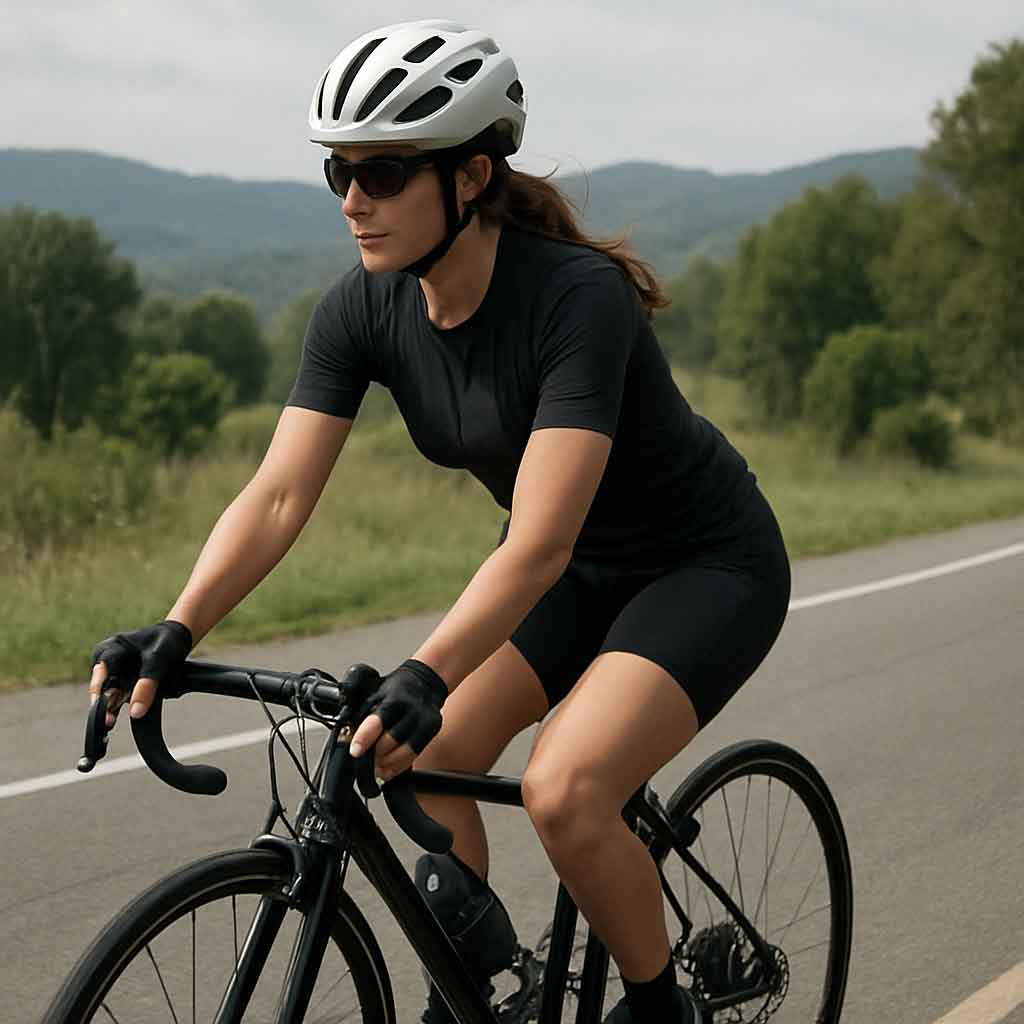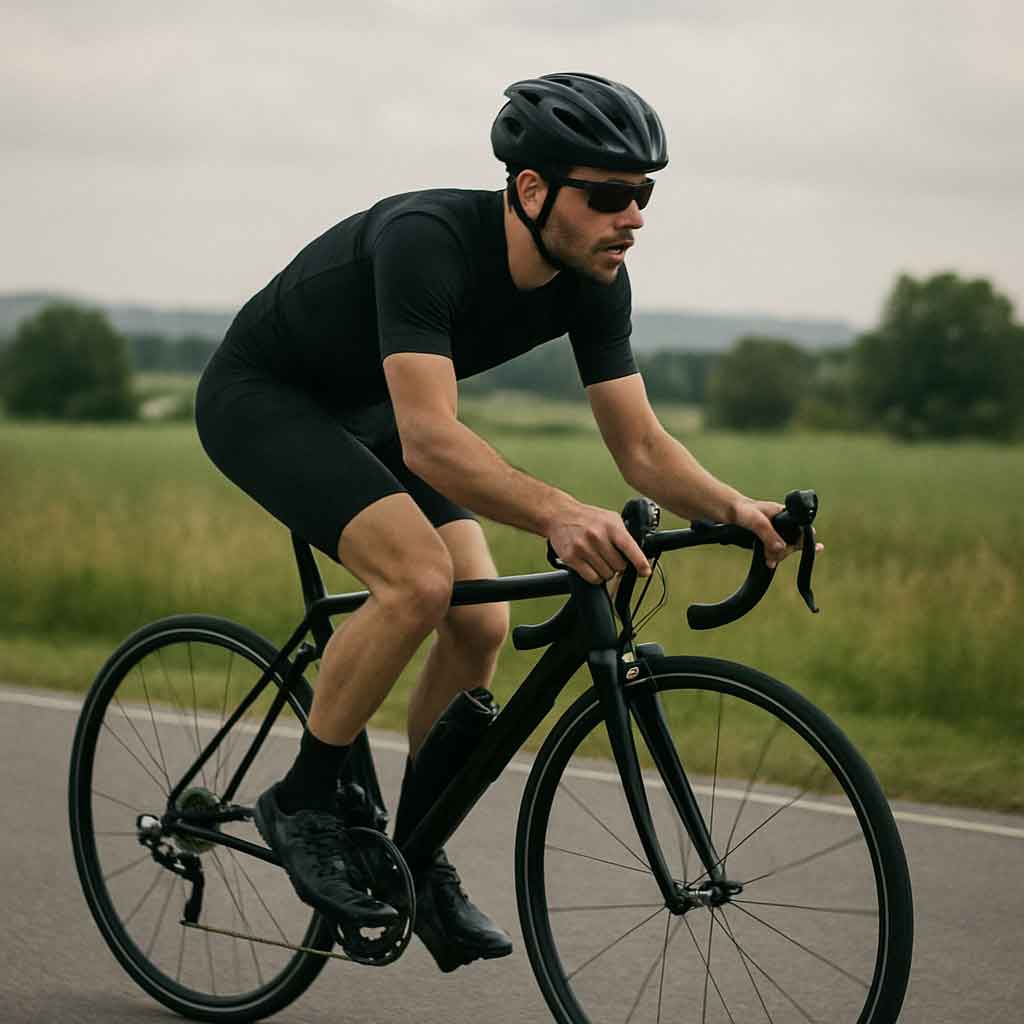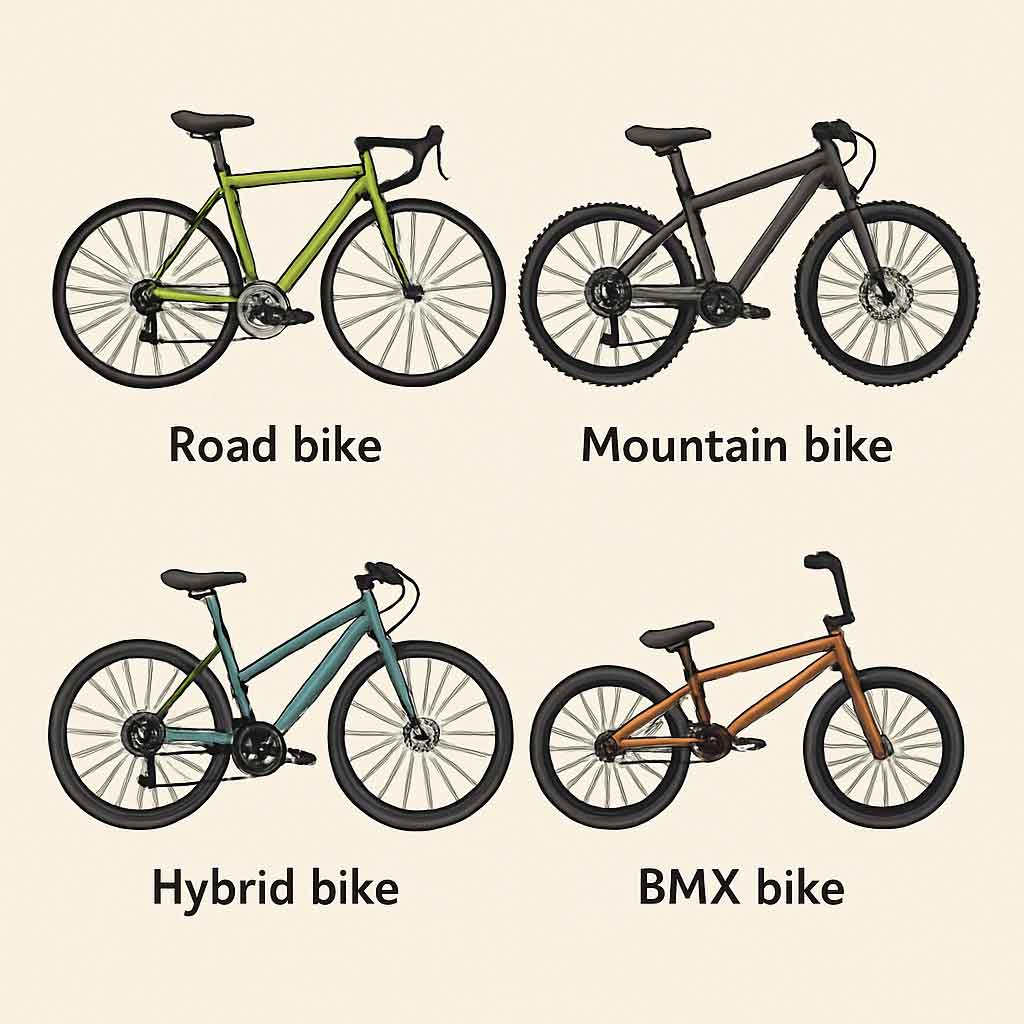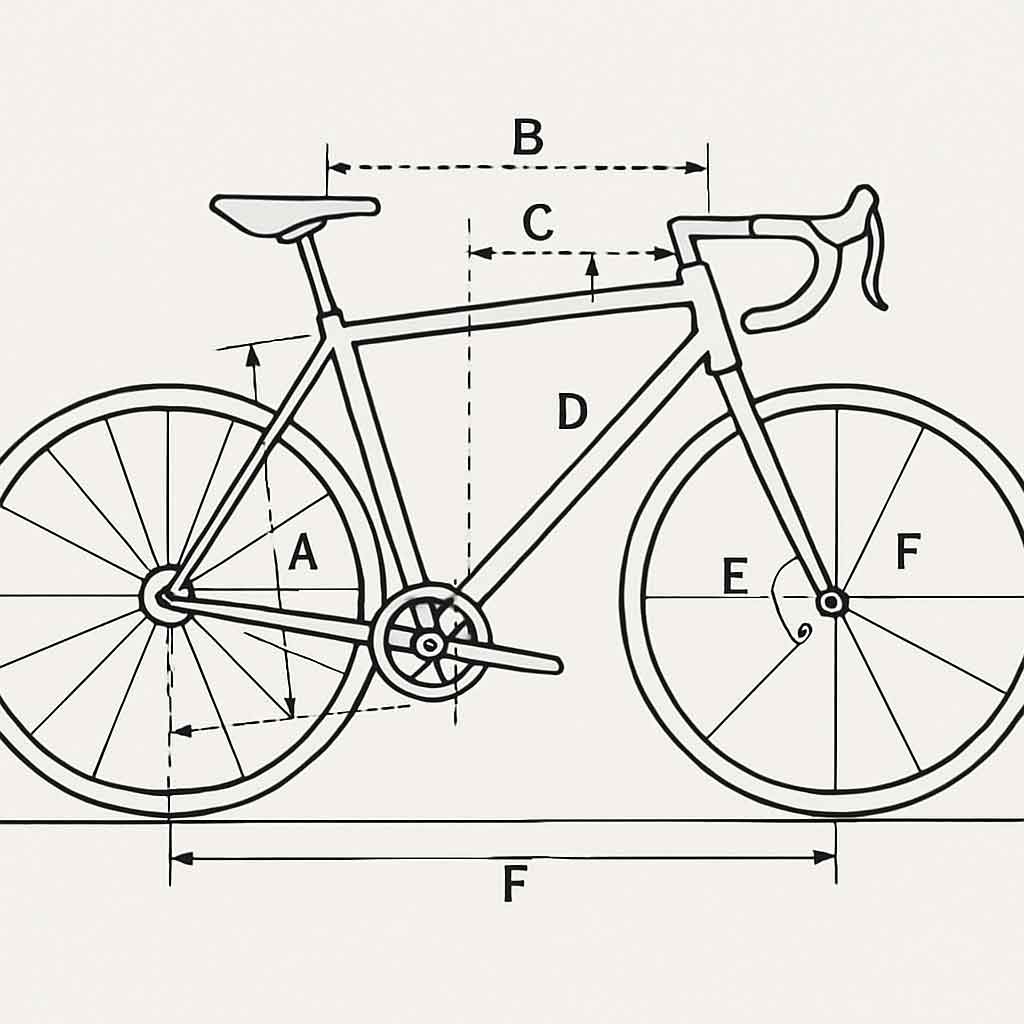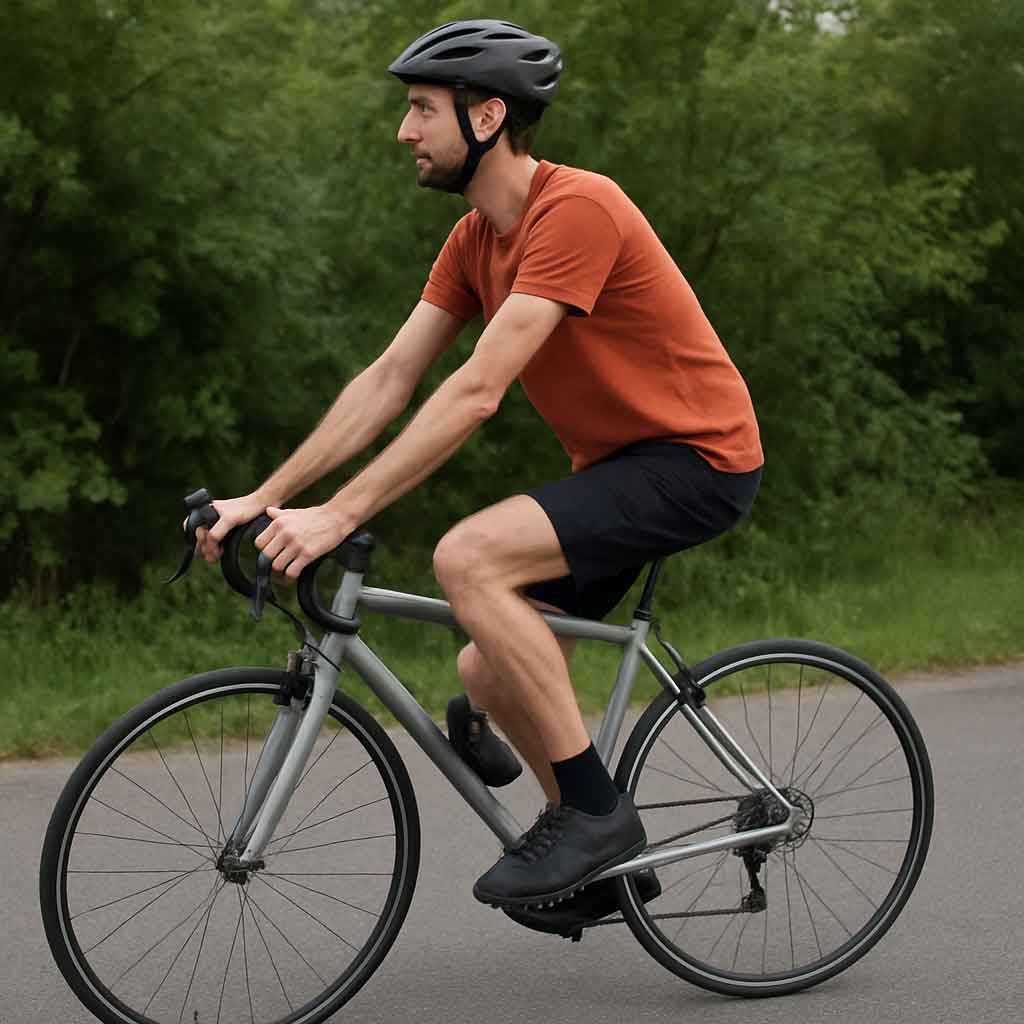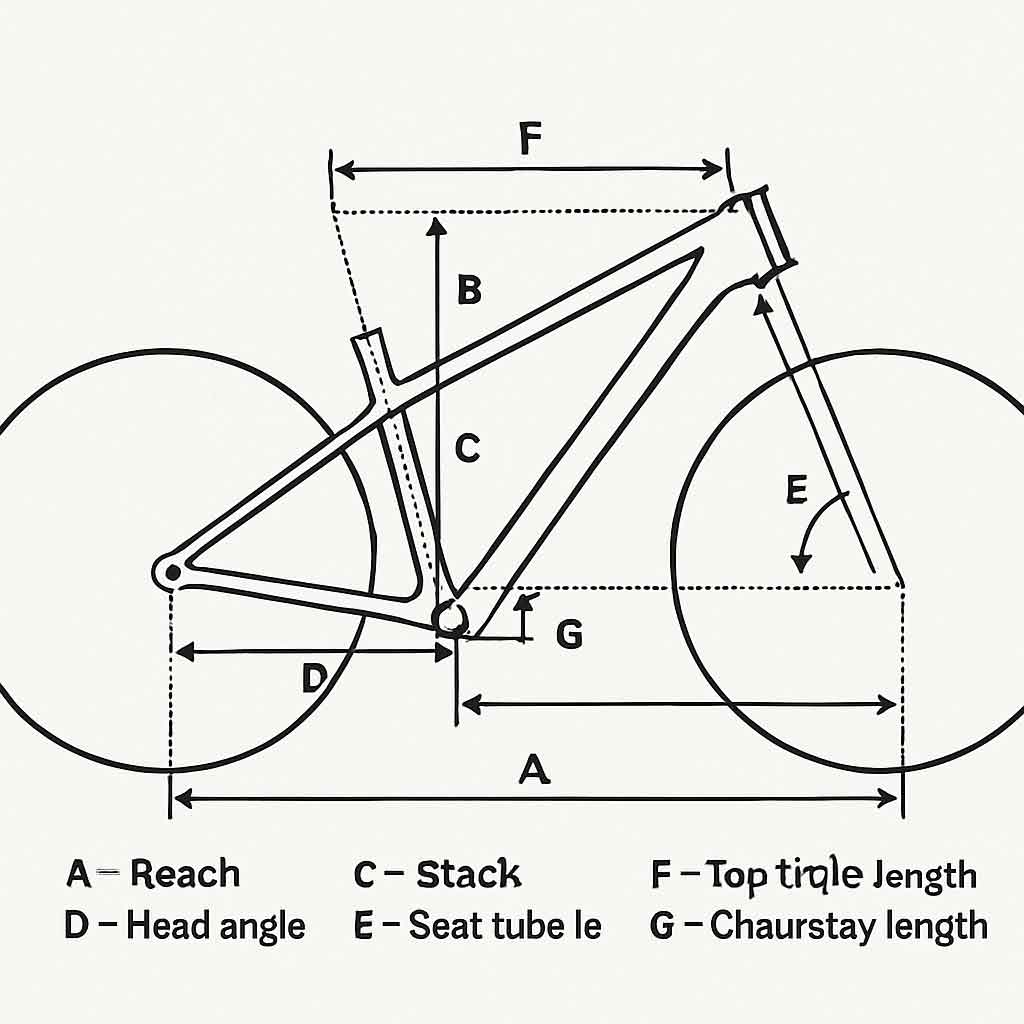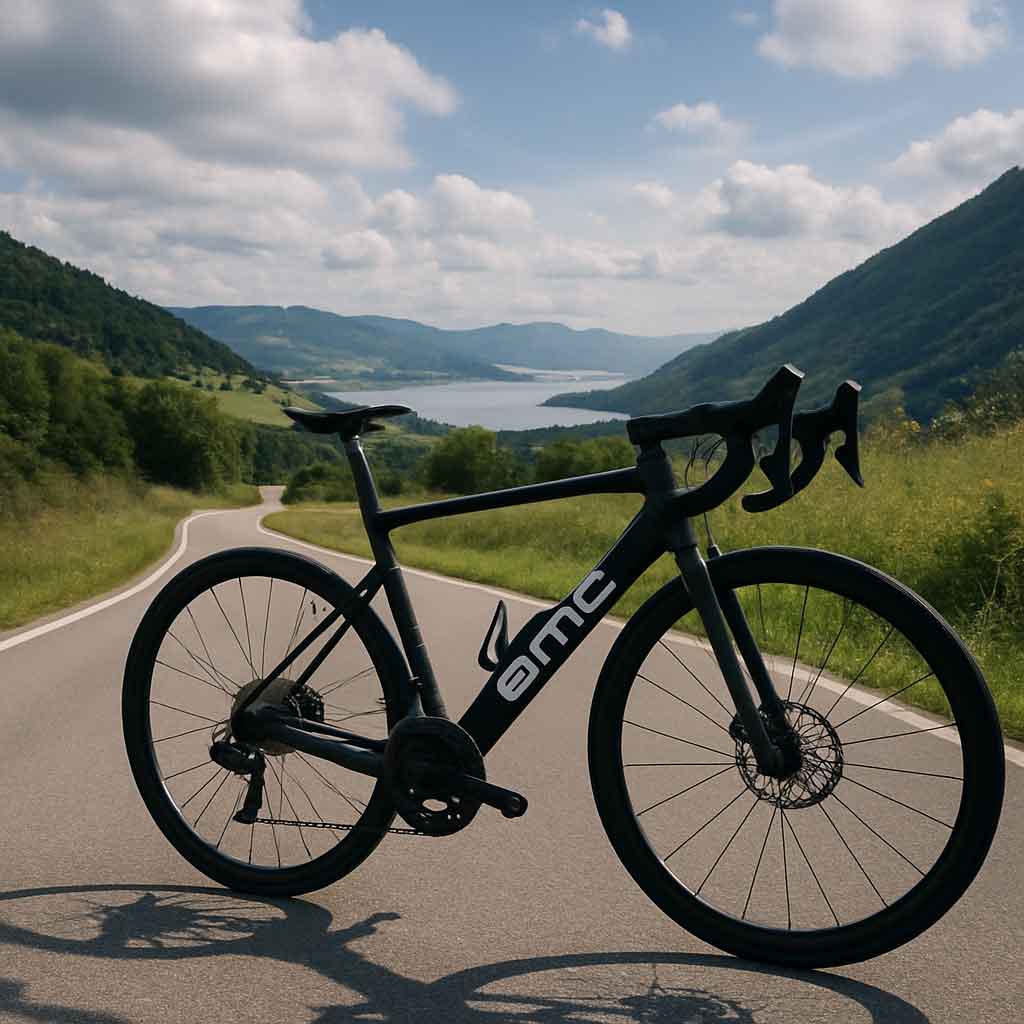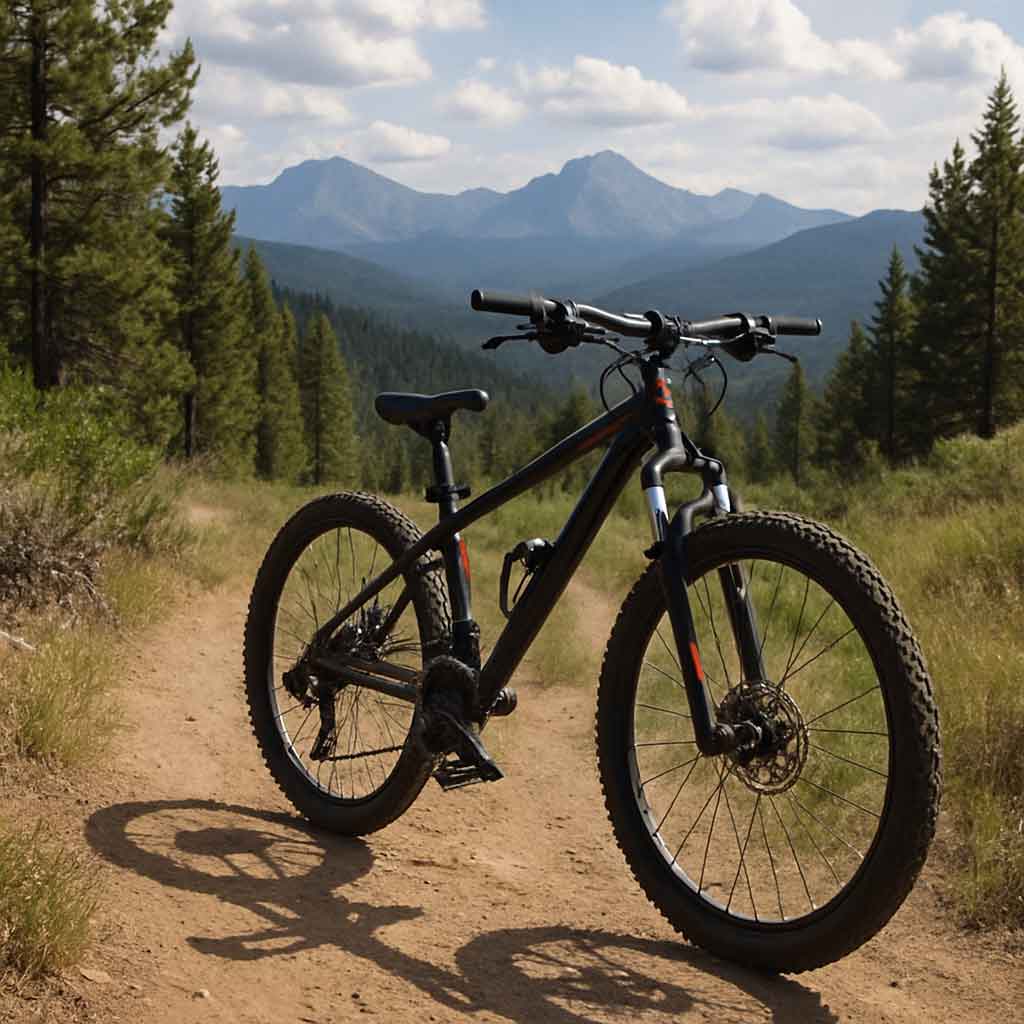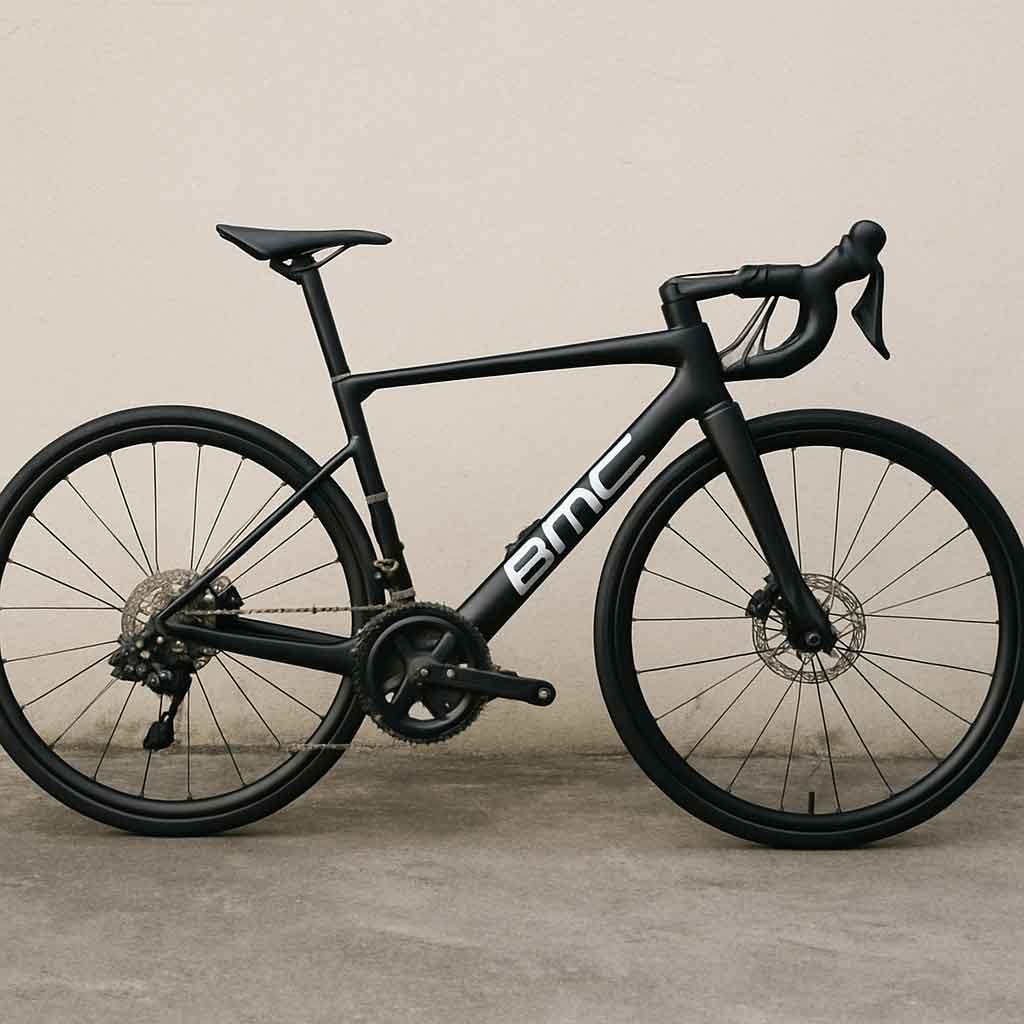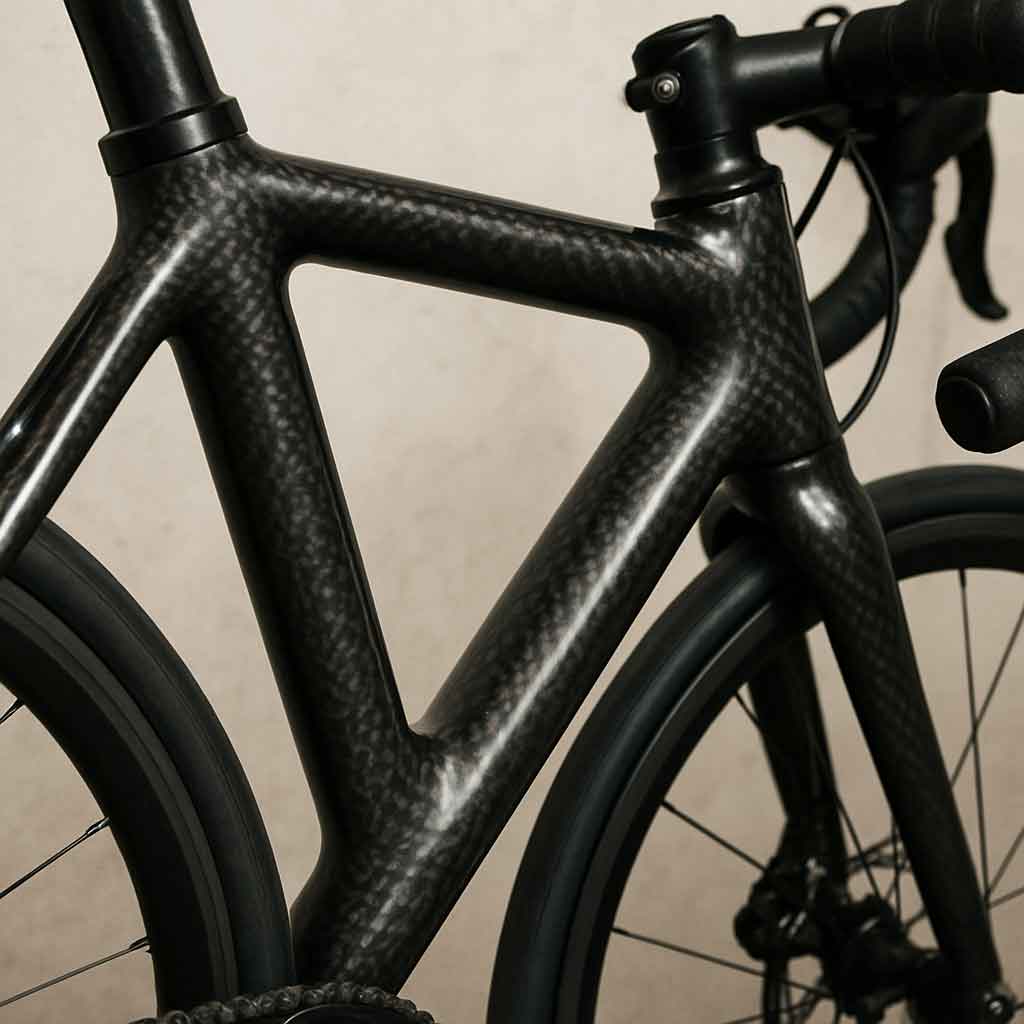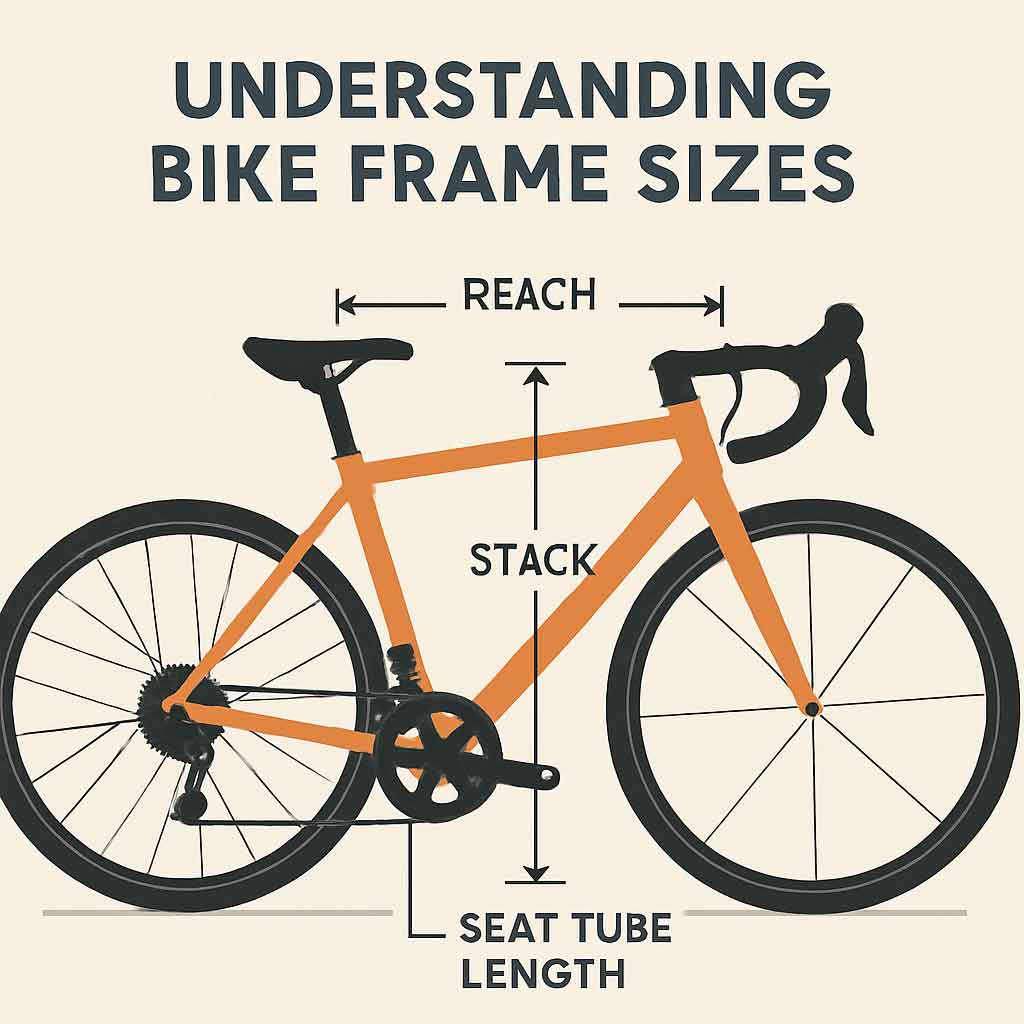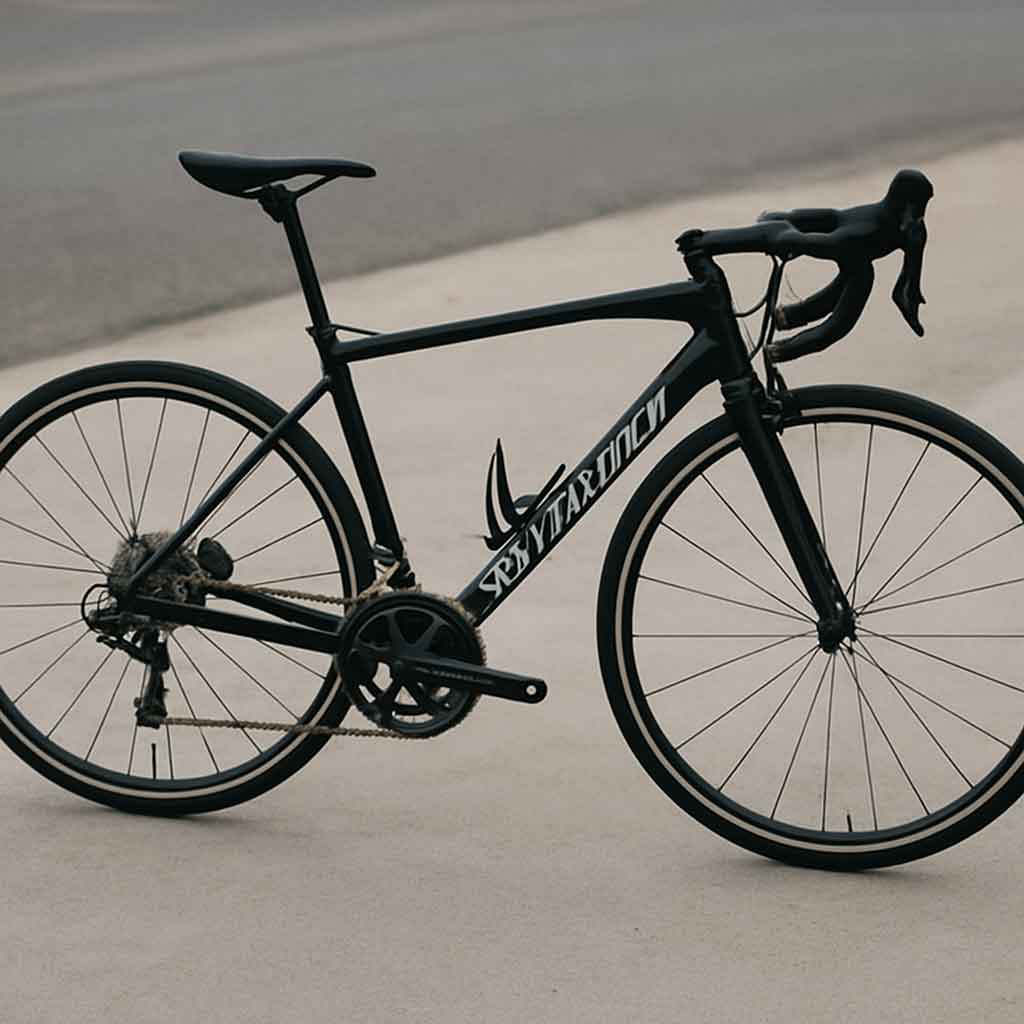Choosing the right bike frame size is crucial for ensuring comfort, preventing injury, and optimizing performance. With a variety of bikes available—mountain, road, racing, and more—understanding how to measure and select the correct frame size is essential. This guide will walk you through everything you need to know about bike frame sizes, from using a bike frame size chart to understanding specific measurements for different types of bicycles.
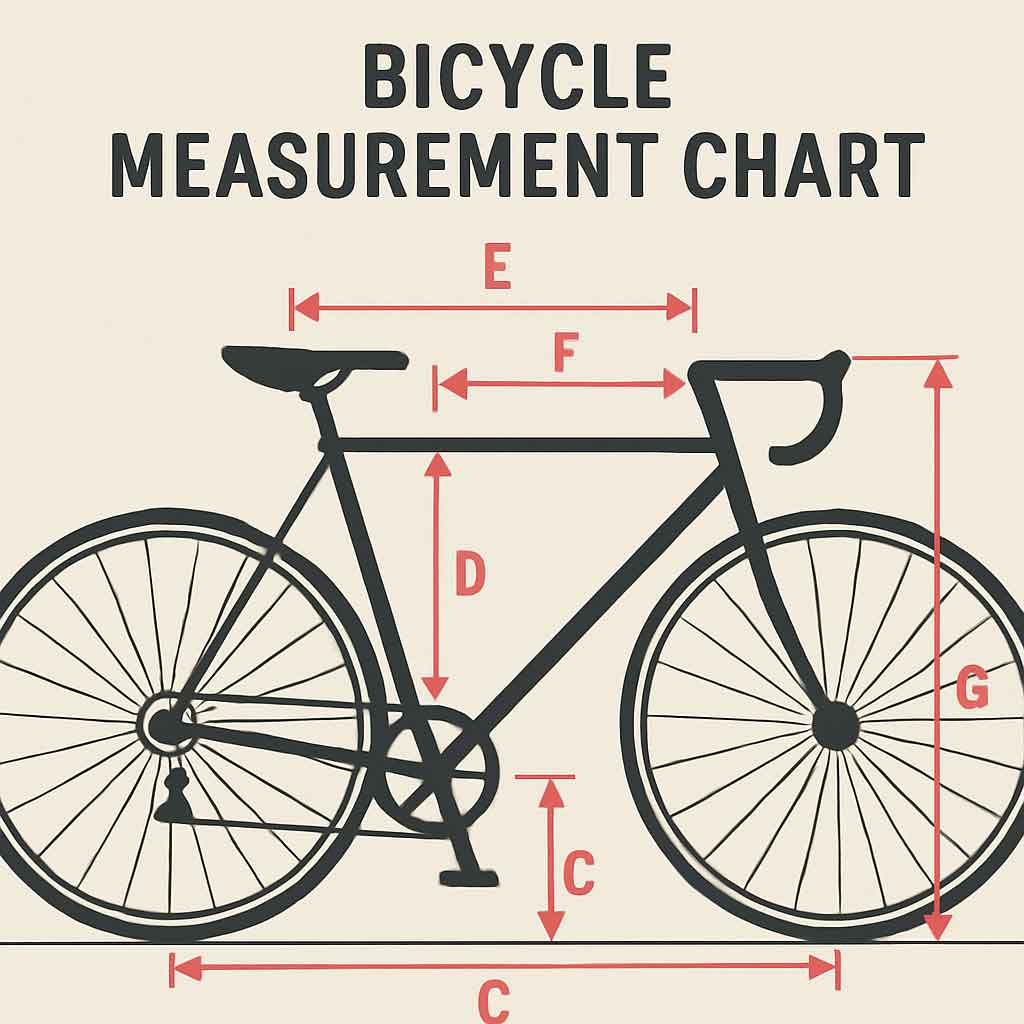
The Role of Frame Size in Cycling Comfort
A correctly sized bike frame helps you maintain proper posture while riding, which is key to avoiding fatigue and injury. When your bike fits well, it allows for a more natural alignment of your body, reducing the strain on muscles and joints. Proper alignment also means that your body can move more fluidly with the bike, which can reduce the risk of repetitive strain injuries. A well-sized frame ensures that your knees are directly above your feet when pedaling, preventing overextension or unnecessary bending that can lead to discomfort over time.
Impact on Power Efficiency
Frame size significantly impacts how efficiently you can transfer power to the pedals and handle the bike. A bike that's too large or too small can cause you to ride in inefficient positions, making it harder to generate power and speed. The right frame size ensures that you can apply maximum force on the pedals without losing energy, which is crucial for both competitive cycling and casual rides. Efficient power transfer is especially important during climbs or sprints, where every bit of energy counts.
Long-term Health Benefits
The wrong size can lead to discomfort, inefficient riding, and even injury over time. Chronic issues such as back pain, knee pain, and numbness in the hands or feet are often linked to poor bike fit. By choosing the correct bike frame size, you can prevent these issues and enjoy longer, more comfortable rides. Investing time in finding the right size pays off with better health, improved endurance, and a more enjoyable cycling experience.
How to Measure a Bike Frame
Understanding Basic Measurements
Bike frame sizes are typically measured in centimeters or inches and refer to the length of the seat tube. Here's how you can measure a bike frame:
- Identifying the Seat Tube: Stand the bike upright and locate the seat tube, which is the vertical part of the frame that supports the seat. This tube is crucial as it forms the basis of your bike's frame size.
- Measuring the Frame: Measure from the center of the bottom bracket (the part that holds the pedal arms) to the top of the seat tube. This measurement gives you the frame size. It's important to be precise, as even a small deviation can impact your bike's fit.
- Considering Geometry: Note down the measurement in either inches or centimeters as indicated by the bike manufacturer. It's important to consider both the frame height and length, as well as the bike's geometry, which includes the angles and lengths of the tubes.
Using a Bike Frame Size Chart

A bike frame size chart is a helpful tool for determining the appropriate bike size based on your height and inseam measurement. Here's a basic guide to using a bike size chart:
- Measure Your Inseam: Stand barefoot with your feet about 6 inches apart. Measure from the ground to the top of your inner thigh. This is your inseam. Accurate inseam measurements are crucial because they directly affect the standover height and overall fit of the bike.
- Refer to a Bike Size Chart: Find a chart specific to the type of bike you're interested in, such as road bikes, mountain bikes, or hybrid bikes. Different types of bikes have varying geometries, so it's important to use a chart designed for the specific bike you're considering.
- Match Your Inseam to the Chart: Use the chart to find the recommended frame size based on your inseam measurement. This step ensures that your chosen bike will accommodate your leg length comfortably, allowing for efficient and comfortable pedaling.
Adjusting for Personal Comfort
While charts provide a good baseline, personal comfort should be the ultimate guide. Consider your riding style and preferences when selecting a size. Some cyclists prefer a slightly smaller frame for increased maneuverability, while others might opt for a larger frame for more stability. Test riding different sizes can give you a better sense of what feels right.
Specific Measurements for Different Types of Bikes
Mountain Bike Frame Size Guide
Mountain bikes are designed for off-road trails, requiring a sturdy frame and specific measurements:
- Standover Height: Ensure there is about 2-4 inches of clearance between your crotch and the top tube. This clearance allows you to dismount quickly and safely on uneven terrain. Standover height is particularly important for mountain bikes, as trails often require quick stops and starts.
- Frame Size Range: Mountain bike sizes usually range from XS (extra small) to XL (extra large) and can be matched with your height and inseam using a mountain bike frame size chart. This sizing flexibility allows riders of all body types to find a suitable bike.
- Consider Suspension and Wheel Size: When selecting a mountain bike, also consider the suspension and wheel size, as they can affect the bike's handling and fit. Larger wheels may require adjustments in frame size to maintain comfort and control.
Road Bike Frame Size Guide
Road bikes are built for speed and long-distance travel on paved surfaces:
- Reach and Stack: These measurements affect your riding posture and comfort. Reach is the horizontal distance from the saddle to the handlebars, while stack is the vertical distance. Both are critical for ensuring a comfortable aerodynamic position.
- Frame Size Measurement: Often measured in centimeters, road bike sizes are determined by the length of the seat tube. A road bike size chart can help you choose the right fit based on your height and inseam. Proper sizing ensures you can maintain an efficient posture over long distances.
- Handlebar Width and Saddle Height: Fine-tuning these elements can further enhance comfort and performance. Wider handlebars can provide more control, while the right saddle height reduces fatigue and improves pedaling efficiency.
Hybrid and Commuter Bikes
Hybrid and commuter bikes combine features from road and mountain bikes for versatile use:
- Comfort and Versatility: Prioritize a frame that allows a more upright riding position for comfort during longer commutes. An upright posture reduces strain on your back and shoulders, making for a more pleasant ride.
- Frame Size Range: Similar to mountain bikes, hybrid bike sizes range from XS to XL and can be matched to your height and inseam. This range provides options for riders seeking a balance between speed and comfort.
- Customizing Fit: Consider adjustable components like stems and seat posts, which can be tailored to suit your preferred riding style. These adjustments can make a big difference in comfort, especially on longer rides.
Adjusting Your Bike for the Perfect Fit

by Max Kukurudziak (https://unsplash.com/@maxkuk)
Once you've selected the right frame size, adjust your bike to ensure the most comfortable fit:
Saddle Height Adjustment
- Optimal Leg Extension: Adjust the saddle so that when you sit, your leg is almost fully extended at the bottom of the pedal stroke. This positioning allows for efficient pedaling without overextending your knees.
- Adjusting for Terrain: On rougher terrain, you might prefer a slightly lower saddle for better stability. For road biking, a higher saddle can enhance pedaling efficiency.
- Trial and Error: Test different heights during short rides to find what feels best. Small adjustments can significantly impact comfort and performance.
Handlebar Height and Position
- Comfort vs. Aerodynamics: Adjust the handlebars to a height that allows you to ride comfortably without straining your back or arms. Lower handlebars can improve aerodynamics but might reduce comfort.
- Personal Preference: Some riders prefer higher handlebars for a more relaxed position, while others may opt for a lower setup for speed. Consider your typical riding conditions and adjust accordingly.
- Fine-tuning for Terrain: If you frequently switch between different terrains, consider adjustable handlebars that can be repositioned quickly.
Stem Length and Angle
- Adjusting Reach: The stem connects the handlebars to the bike frame. A longer or shorter stem can help fine-tune your reach and posture. The right stem length ensures you can comfortably reach the handlebars without stretching.
- Testing Different Lengths: Experiment with different stem lengths to find a position that balances comfort and control. This is especially important for riders who switch between different types of terrain.
- Considering Stem Angle: The angle of the stem also affects handlebar height and reach, offering another dimension for customization. A steeper angle can increase height, while a flatter angle can enhance aerodynamics.
Common Questions About Bike Frame Sizes
What Size Bike Frame Do I Need?
Your ideal bike frame size depends on your height, inseam length, and the type of bike you're interested in. Using a bike size chart can help provide a good starting point. However, personal preference and riding style should also guide your decision.
How Do I Measure the Frame Size of a Mountain Bike?
Measure from the center of the bottom bracket to the top of the seat tube. Ensure there is adequate standover height clearance. This measurement ensures you can mount and dismount safely on rugged terrain.
What Height Bike Do I Need?
Your height and inseam measurement will guide you to the right frame size. Refer to a bike size chart specific to the type of bike you want. Remember, comfort and fit can vary between different bike models and brands.
Conclusion
Choosing the right bike frame size is essential for comfort and performance. By understanding how to measure a bike frame, using bike size charts, and adjusting your bike for a perfect fit, you can ensure a more enjoyable and efficient riding experience. Whether you're looking at road, mountain, or hybrid bikes, taking the time to find the right frame size will pay off in comfort and performance on every ride.
Remember, a properly fitted bike is not just about the frame size—it's about the overall comfort and efficiency of the ride. Take the time to measure, adjust, and test out different setups to find what works best for you. Happy cycling!

